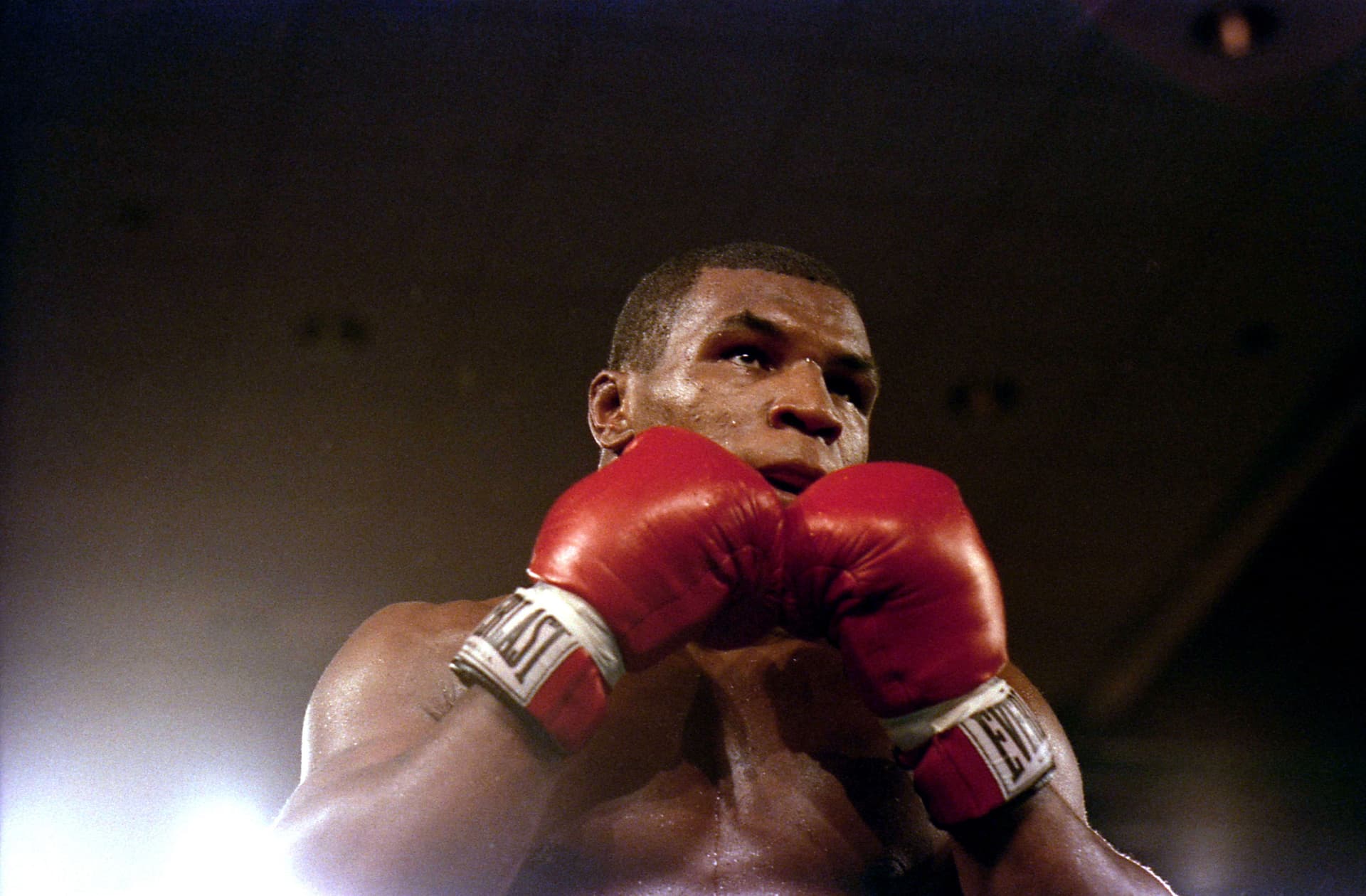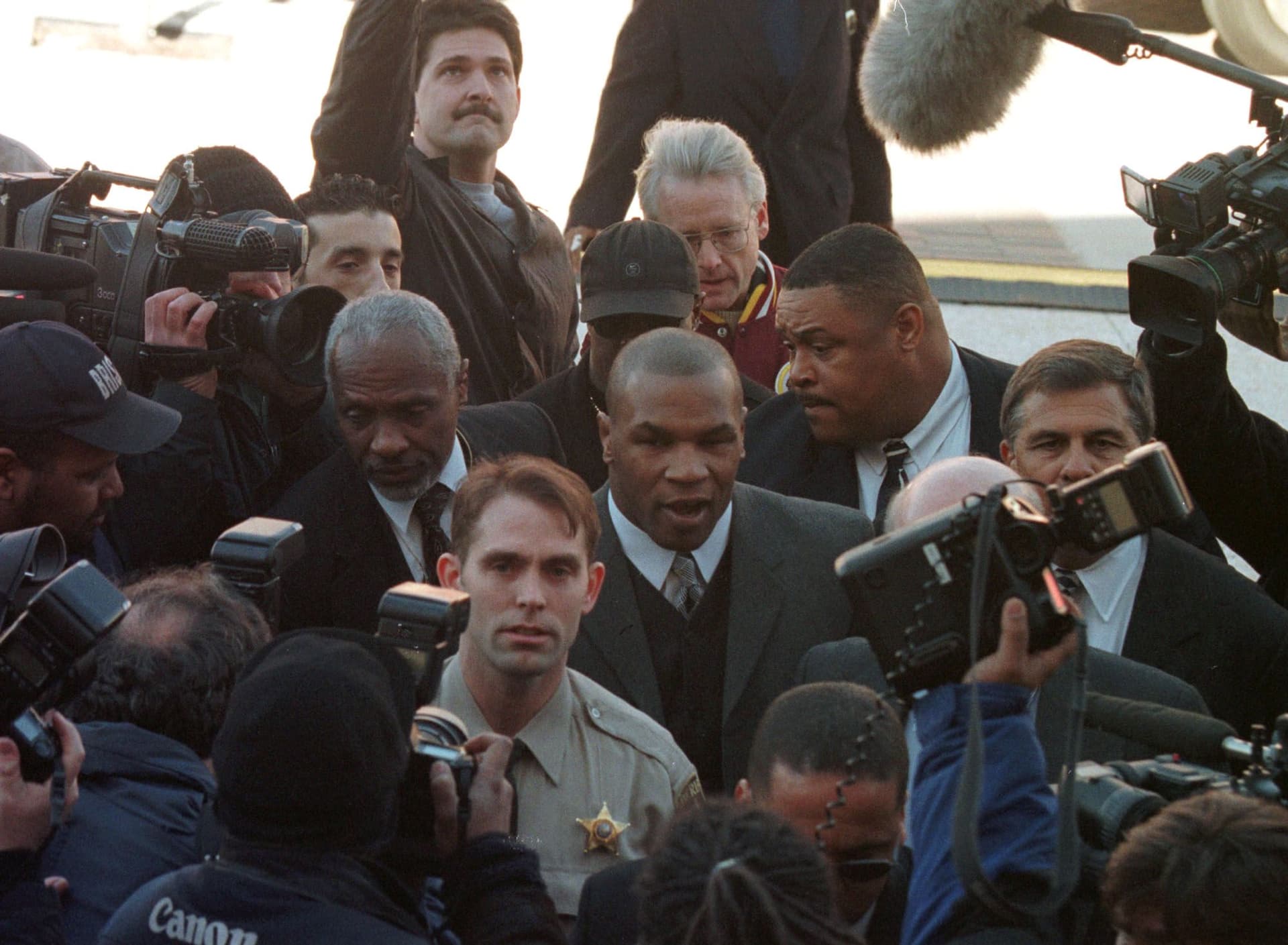Boxing
When did Mike Tyson Start Boxing? Records Explained
‘Iron’ Mike Tyson became the youngest heavyweight world champion in history at the age of 20, but when exactly did he first start boxing to achieve this unique record that still stands today?

Mike Tyson//Getty Images
When did Mike Tyson Start Boxing?
Before he became ‘Iron’ Mike, before he was declared ‘The Baddest Man on the Planet’, before imprisonment, boxing bans, fines, abuse allegations, affairs, addictions and bouts of depression, Michael Tyson was an innocent baby born into a world of misfortune and hardships.
Born Michael Gerald Tyson on June 30, 1966, in Brooklyn, New York, the youngster endured a difficult start to his life which set the tone for his rocky pathway forwards.
The once-virtuous boy became a product of his harsh environment, surrounded by crime and death from such a tender age, it was inevitable it would shape his story onwards, where scandal stalked him endlessly after.
His severe upbringing callously chiselled him into a hardened, resilient, ruthless human being who transformed into the most feared fighter on the planet.
As is often the case – almost an overused cliché now – boxing saved Mike’s life. He has even looked back himself and confessed his life would have been spent in and out of prison and most likely ending early if it wasn’t for boxing.
Here we explore just exactly how one of sporting history’s most iconic figures first started out in boxing, way before he ever became ‘Iron’ Mike.
Rough Road to the Top
The youngest of three children, Michael was born in Fort Greene, Brooklyn, on June 30, 1966. His mother, Lorna Mae Smith, was from Virginia, and his father, Purcell Tyson, was a local cab driver, originally from Jamaica.
However, the man Tyson had known as his father was Jimmy Kirkpatrick from North Carolina, who left his own family behind to move to Brooklyn, where he later met Tyson’s mother, but left their family home when Mike was just two-years-old, leaving him without a father figure to guide him through life.
It also meant the struggling family were forced to move to Brownsville, an area well known and feared for its high crime rate.
Growing up in such a violent concrete jungle taught 10-year-old Tyson to defend himself very early on in life, getting into street fights on a daily basis. He said himself that he was often ridiculed for his high-pitched voice and lisp, which not only dented his confidence and made him nervous, but also caused a lot of arguments and fights.
He became involved in various different street gangs very early in his life, way before he was a teenager.
It’s reported that he had been arrested over 30 times by the time he became 13-years-old, for petty crimes, such as theft, pick-pocketing, muggings, but mostly for fighting.
He confessed that he was actually arrested over 40 times, stating that he would walk up to an unknowing victim and knock them out with one punch, then rifle through their pockets as they lay there unconscious. This abhorrent behaviour saw him end up in a reformatory school, the Tryon School for Boys.
Mike’s counsellor, Bob Stewart, was kind enough to believe in the troubled teen and tried to channel his misguided energy and aggression correctly, and began training him in boxing on the proviso that he would increase his studies and decrease his activity on the streets, to which he agreed and immediately made positive strides.
Even though he was initially classified as having a learning disability, Mike’s reading ability and studies were brought upwards to a healthy standard, and his hunger for boxing training became insatiable. He had finally found the focus he required in the sanctuary of the boxing gym.
It soon became clear that the young kid with raw power and natural fighting skills possessed huge potential, flooring full grown men in sparring when he was just 14-years-old, so Bob Stewart decided to take his training further by introducing him to local trainer, Cus D’Amato.
But then his positive trajectory took a dive when his mother passed away when he was only 16 and he fell back into his old ways and was kicked out of school for fighting.
Fortunately, Cus became his guardian and the father figure he never had, and, although in mourning, Mike was able to refocus back on his training again.
He later regrettably reflected on his relationship with his mother, “I never saw my mother happy with me or proud of me for doing something.
She only saw me as being a wild kid running the streets, coming home with new clothes that she knew I didn’t pay for. I never got a chance to talk to her or know about her. Professionally, it’s had no effect, but it’s crushing emotionally and personally.”
Going for Gold
As an amateur, Tyson compiled a record of 24-3, winning two National Junior Olympics gold medals in 1981 in North Carolina and again in 1982 in Tennessee.
In 1984, he won the 1984 New York Golden Gloves tournament, which is regarded as the hardest state competition to win in America.
However, two defeats to Henry Tillman meant that Tyson wasn’t selected for the 1984 Los Angeles Olympic Games, which Tillman went on to win gold at. Tyson had to wait over six years to get his revenge in the pros, when he knocked Tillman out in just 166 seconds in 1990.
Tyson had an A-Team training him in Cus D’Amato, who was assisted by Kevin Rooney and Teddy Atlas. It was this trio that taught him his peekaboo style of fighting with his hands held high and the fast-advancing bobbing and weaving movements that allowed him to throw left and right hooks with such twisting and torque that it generated ferocious knockout power.
On Top of the World
Tyson turned pro at the age of 18 years and 249 days. His professional debut lasted just 107 seconds and was his first of an eventual 24 first-round knockout wins – nine of those knockouts would come within a single minute.
Once more, things went sideways when his beloved mentor, Cus D’Amato’ passed away at the age of 77 on November 4, 1985. He died of pneumonia just three days after Mike became 11-0 with 11 KOs.
However, although it crushed him in the same way his previous tragedies did – when his surrogate father left and his mother passed – he had learnt to stay focused, and even fought twice more that same month, winning both by knockout.
He kept going and soon found himself at 27-0 and mandated to fight for the WBC World heavyweight title, which he won via second-round stoppage over the champion, Trevor Berbick, in Las Vegas in September 1986.
He did this at the age of just 20-years and 145-days, making him the youngest every world heavyweight champion in the history of the sport.
He further broke records by becoming the first undisputed heavyweight champion in a three-belt era and finished his illustrious career as a two-time world heavyweight champion with a record of 50 wins, 6 losses, and 44 knockouts.
However, many imagine that if Cus hadn’t died then Mike would never have lost focus or ever allowed an entourage to distract him enough to lose to 40/1 underdog Buster Douglas.
Continued Controversy
However much he achieved in his combat career, scandal stuck to him like glue throughout his entire life.
In his early years, he appeared destined for a life of crime and catastrophe, but his inconceivable transformation to world champion was one of the most inspirational stories of all time.
However, his childhood traumas extended into his adult life, ensuing on an endless loop, revolving regularly like the treadmills he would trot on daily.
Arrested over three dozen times as a youth, he would find himself in handcuffs persistently during his adult life too. Tyson spent time in prison, convicted of rape in 1991, sentenced to 10 years, serving only three, and later forced to register as a sex offender. To this day, he maintains his innocence.
He was arrested for many other misdemeanours, such as reckless driving, property damage, drink-driving, drug possession.

Mike Tyson Is Being Handcuffed//Getty Images
He has been married three times, and has seven children, one of which tragically passed away.
His first wife, Robin Givens, who was a famous actress, defined their marriage as extremely tumultuous, with allegations of violence and abuse.
Givens described life with Tyson as “torture, pure hell, worse than anything I could imagine”. Mike later admitted to punching Givens and even stated, “that was the best punch I’ve ever thrown in my life.”
His second marriage ended with his wife accusing him of adultery, and he remarried a third time in 2009.
He converted to Muslim during his incarceration and enjoys a life of sobriety, but he is well known for his legal cannabis empire, which sees him pocket up to a million dollars a month.
There’s an age-old adage that many involved in this brutal sport have been fortunate to breathe a sigh of relief and say: “Boxing saved my life”.
While this is certainly true for Mike Tyson, his violence and criminal activity did creep back into his adult life, but it’s scary to imagine what he could have turned out like without boxing.

Tim has over 27 years experience within the sports industry, working for football clubs Arsenal FC and Millwall FC, and boxing news websites British Boxing News, Boxing Social and Global Boxing News. His boxing articles have been published in Boxing News Magazine, national newspapers, plus many other major news outlets.